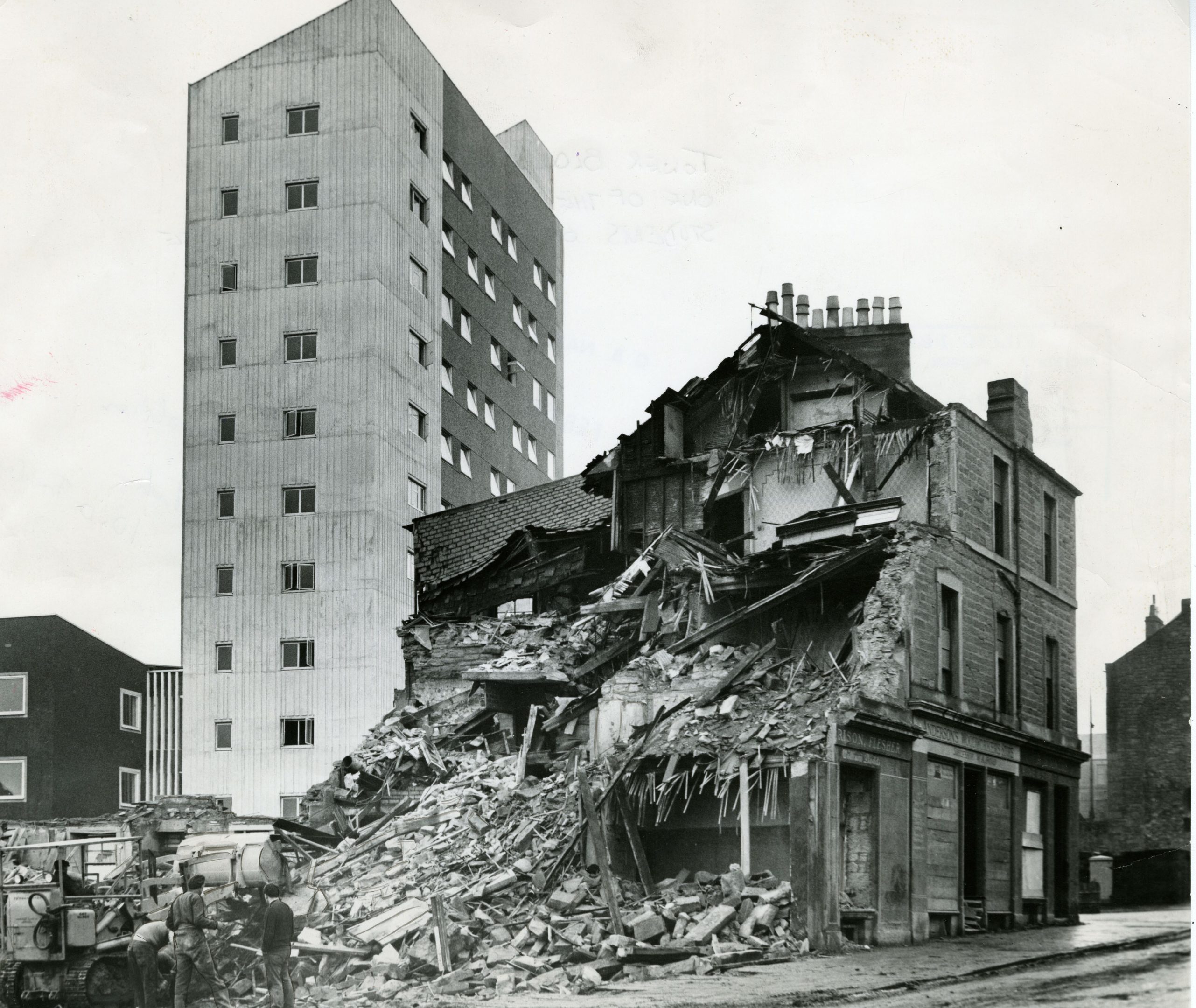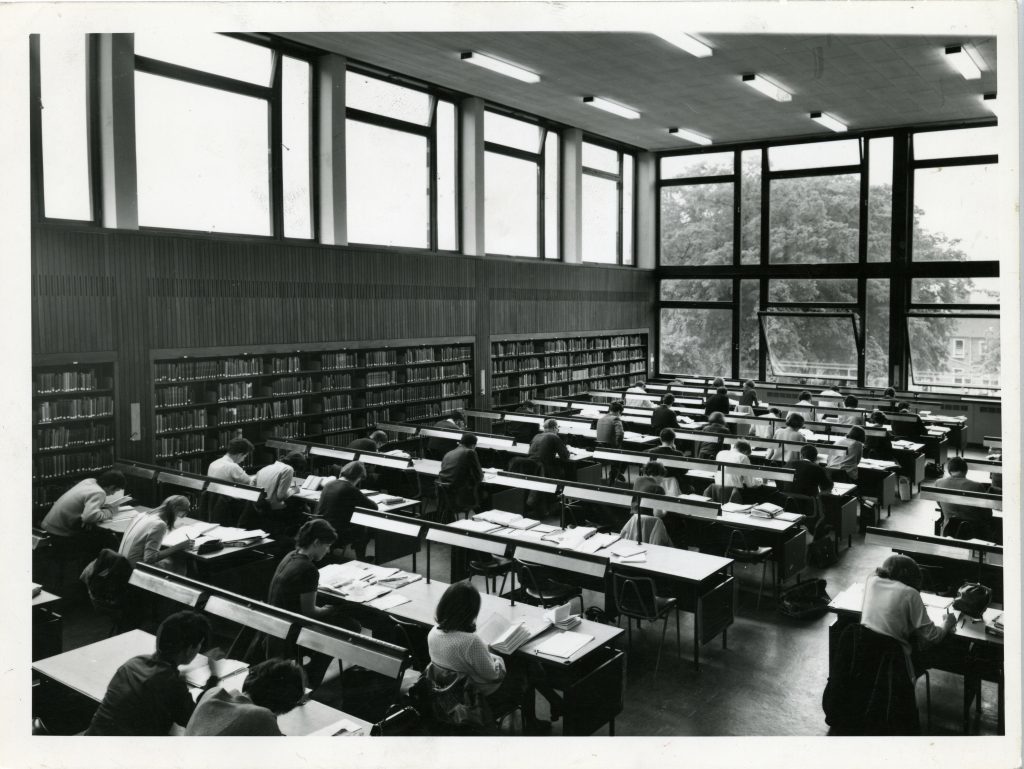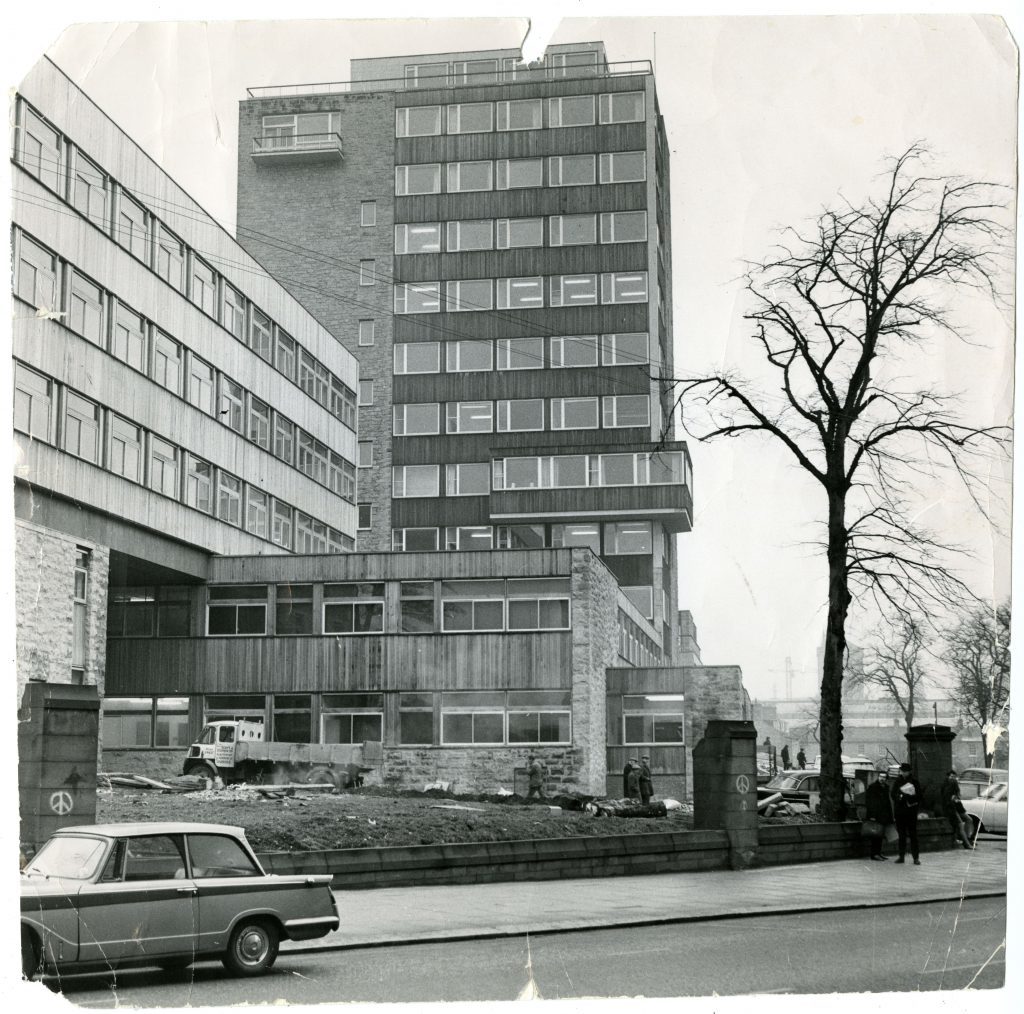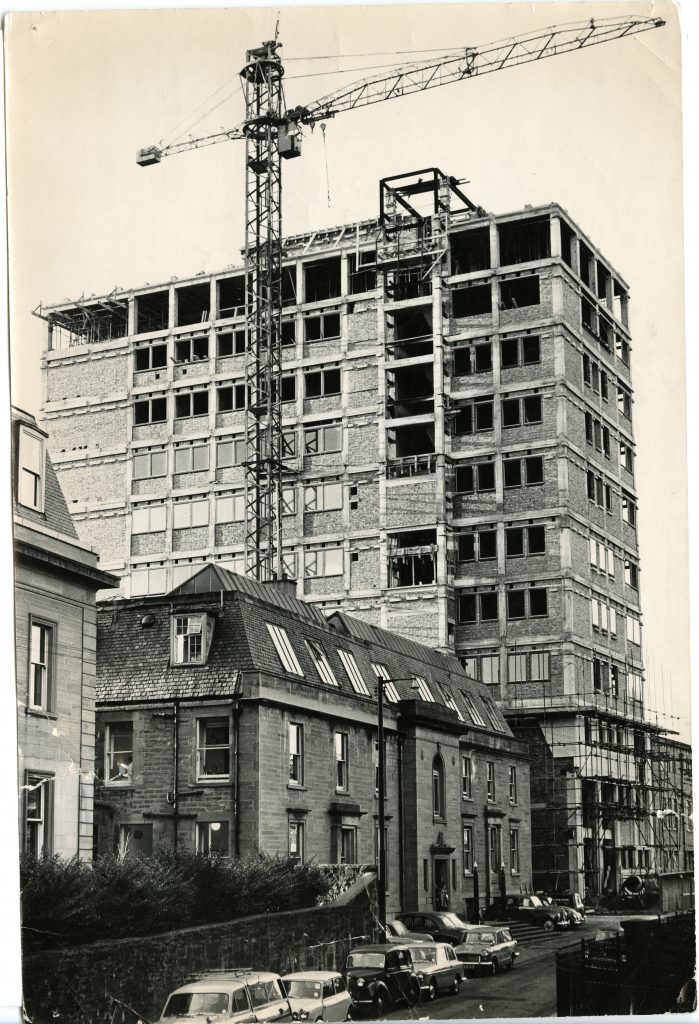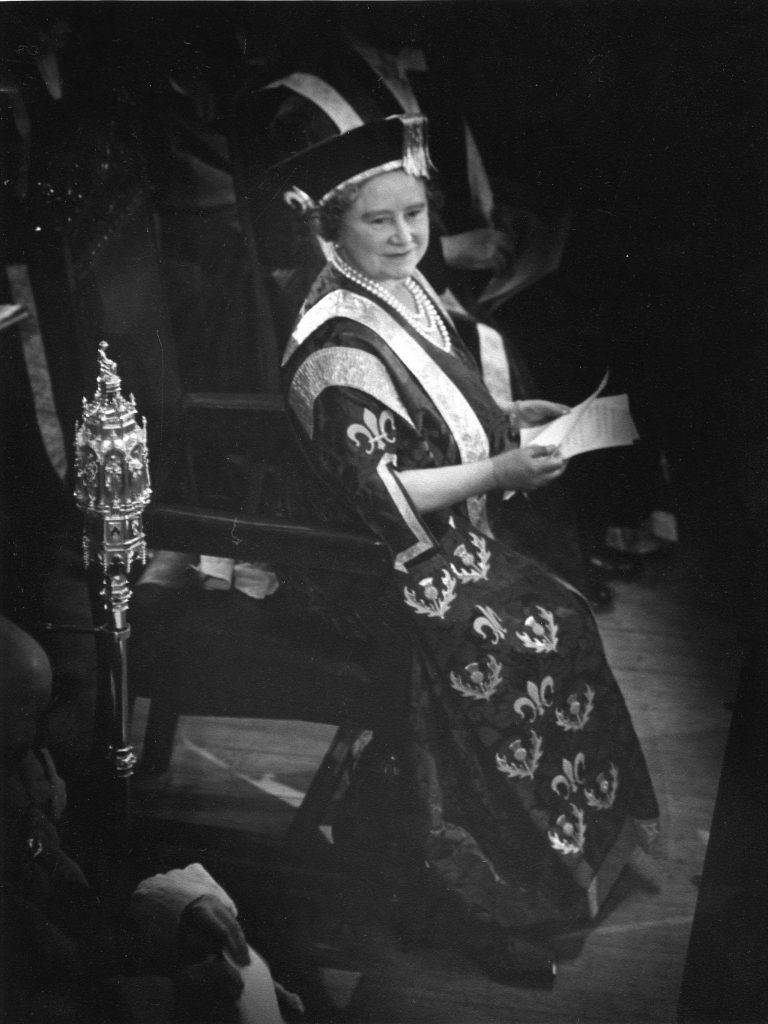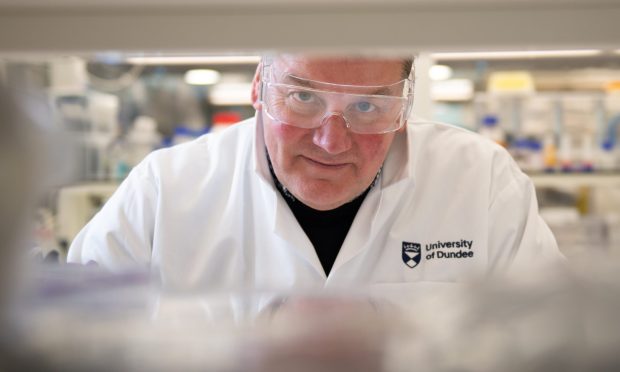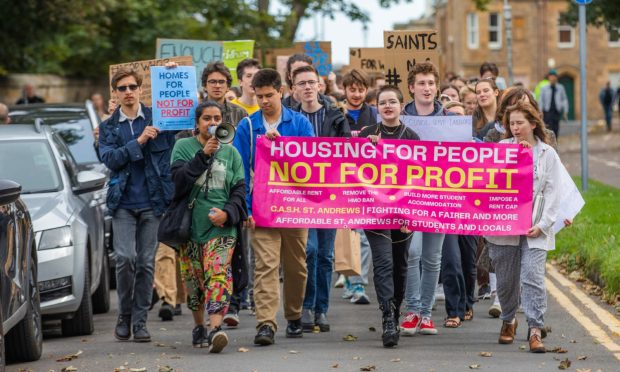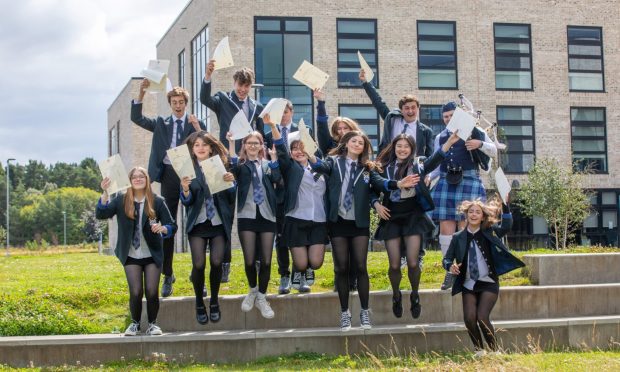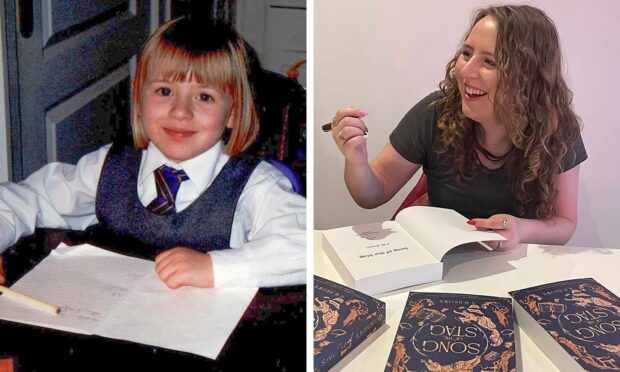Dundee University was one of a number of `new’ universities created across Scotland – the only totally new one was at Stirling, while others such as Strathclyde were created out of college mergers.
In Dundee there was an initial rush of building as the university campus began to take on the shape that is recognisable today. This included a new Students’ Association building and Chaplaincy Centre, while at the north-west corner of campus the Medical Sciences Institute and Biological Sciences Institute were created.
Most notably of all, in 1974 the Queen Mother opened the new Ninewells Hospital and Medical
School, ten years after the ceremonial cutting of the first sod. This was an important development for the university which, while small in overall size, already had a burgeoning Medical School.
Also finding a home in the west end of the city was another new addition linked to the university – the Botanic Garden.
At the time of independence from St Andrews, Dundee had 2324 students. To put that in context, today the university has around 1000 more staff than that, while student numbers have increased by more than 700%.
The initial aim was to increase student numbers significantly but that would not be realised until much later. The general economic situation of the UK was not strong, and the effects were very much felt at universities.
In the new Tower Extension building at the university, half of the fluorescent light tubes in staff offices were removed as a cost-cutting measure, together with all electric clocks!
The political atmosphere on campus was febrile, with a student rent strike and the Students’ Association having their constitution withdrawn by the University Court.
In this cauldron notable political careers were born. Lord Robertson, the future Secretary General of NATO and a senior Labour Cabinet Minister, wrote columns for the student newspaper which was edited at the time by his future Labour colleague Brian Wilson.
Featuring in the pages was also William Patey, a future UK Ambassador to Irag, Afghanistan and Saudi Arabia.
Life for students could be interesting. Accommodation was scattered across the city centre, with residences including the old Chalmers Hall at the top of Castle Street.
Some digs were not as comfortable as may have been hoped. Rod Lynch, a social sciences graduate who would go on to become a senior executive with British Airways and sit on the boards of the BBC and Civil Aviation Authority, reported of his flat in the west end,:“The loo actually froze inside the building for a couple of weeks which was character forming to say the least!”
HM Queen Elizabeth, The Queen Mother was the university’s first Chancellor, which is the most senior position in the university structure.
Her decision to accept the post was interpreted at the time as being a very public vote of confidence in the fledgling university, and helped raise the profile of Dundee at a crucial time in its history.
A popular figure with staff and students, she impressed the university community with the commitment she showed during her decade in office, and continued to retain a close interest in the university’s affairs even after she stood down.
She played an active part in the 1982 celebrations marking a centenary of higher education in Dundee.
In 2000 she agreed to lend her name to a new building on campus which is now home to the School of Computing, including one of the world’s foremost research groups harnessing developments in new technologies to tackle problems associated with old age and disability.
Her granddaughter, Princess Anne, opened the Queen Mother Building at the heart of the campus in 2006.
